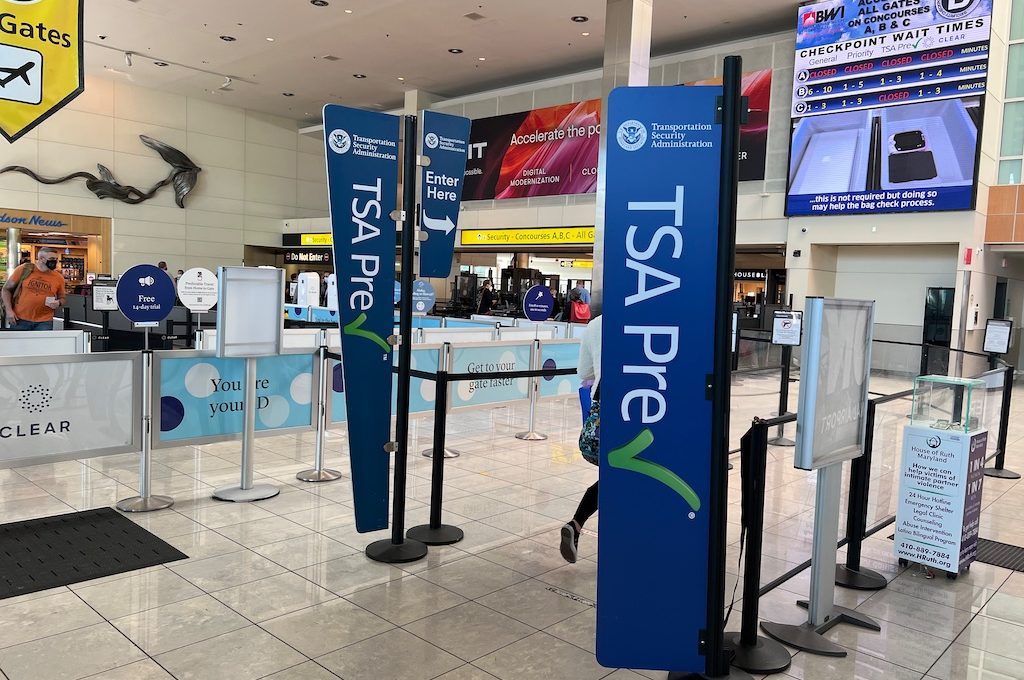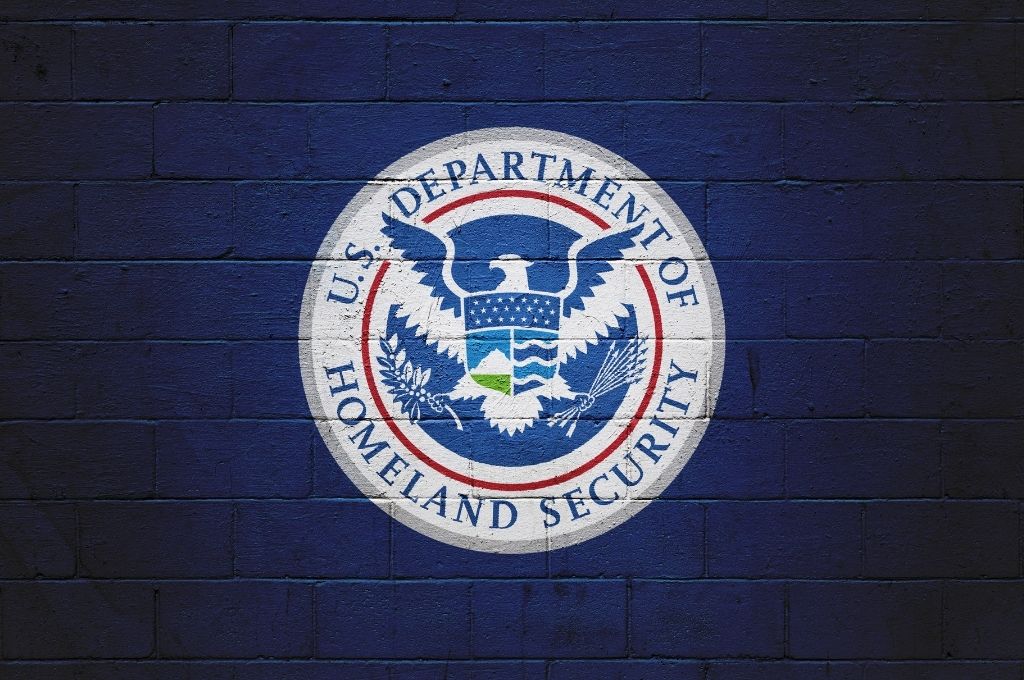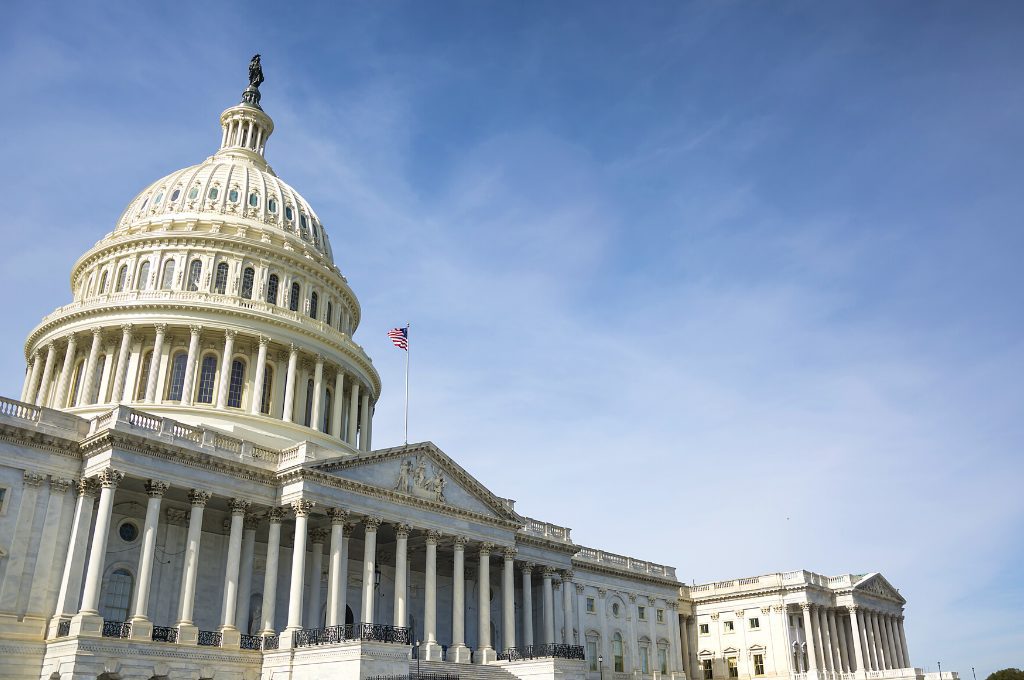You’ve probably seen the term REAL ID quite a few times over the past few years. It’s been in the news, on the blogs, and even at airports and other ports of entry.
Some people are surprised to find out that the REAL ID has been a thing for over 15 years!
But now, we seem to be closer than ever to the point when the REAL ID will be officially implemented so it definitely pays to know what it is all about.
Below, I’ll give you a breakdown of what the REAL ID is and talk about the background of how it came about. I’ll tell you everything you need to know about it including giving you a detailed recap of its timeline.
Table of Contents
What is the REAL ID Act?
The REAL ID Act is an act of Congress intended to make state-issued drivers licenses and IDs more secure by helping to reduce fraud.
Specifically, the Real ID Act prohibits federal agencies from accepting drivers licenses and other ID cards issued by states and territories that do not comply with the REAL ID Act’s minimum standards.
The result is that people without compliant state IDs cannot access certain federal government facilities, nuclear power plants, and cannot board flights, unless they provide some type of alternative ID (such as a passport).
For your average traveler who is not visiting government facilities or nuclear power plants, the biggest and most notable change will be that you will not be able to rely on your drivers license to get you through TSA unless it is REAL ID compliant.

How to know if you have a REAL ID compliant ID
REAL ID-compliant licenses are marked by a star on the top of the card. It’s usually very easy to spot but if you aren’t 100% sure just contact your state driver’s licensing agency or local DMV.
Keep in mind that there are some IDs that do not have stars on top of the card that can still be accepted. For example, these may include enhanced driver’s licenses (EDLs) and enhanced IDs.
Only five U.S. states (Michigan, Minnesota, New York, Vermont, and Washington) offer EDLs.
Related: Can You Get Through TSA and Fly with No ID?
How to get a REAL ID compliant ID
If you need to get a REAL ID compliant ID, check out this official website from the DHS. You can then click on your state or territory and then you will be able to set up an appointment. You can also just contact your local DMV.
Be aware that you will need certain documents when you head to the DMV.
At a minimum, you must provide documentation showing:
- 1) Full Legal Name
- 2) Date of Birth
- 3) Social Security Number
- 4) Two Proofs of Address of Principal Residence and
- 5) Lawful Status
Some locations may require you to submit even more documents which is why you want to contact the office nearest you.
REAL ID Act background
After the attacks of September 11, the US established the 9/11 commission to help find out ways to reduce future terrorist attacks.
One of the recommendations that came out of the report was a recommendation to establish federal standards for IDs.
“The federal government should set standards for the issuance of birth certificates and sources of identification, such as drivers licenses.”
Before 9/11, every state had its own set of rules for how IDs were provided and what information was showing on IDs, including security features. And these are not always the most robust requirements or processes.
Going back to the 1990s, many DMV’s struggled to deal with fraudulent actors who were seeking IDs for nefarious purposes, so this has been an ongoing problem.
However, they didn’t have the resources or the structure (or just the proper motivation) to successfully combat these and that is what the REAL ID initiative helped provide.
Related: TSA Pre-Check Guide (Application Process, Locations, Status)

What are the REAL ID Act requirements?
The REAL ID Act requirements primarily affect the agencies that are issuing the IDs and require them to comply with certain standards. Specifically, there are 39 REAL ID standards or benchmarks (although some argue there are 43).
The state or territory issuing the ID must meet certain standards when issuing an ID such as:
- Capture a photograph of the applicant
- Store digital images of the applicants documents
- Verify the documents with the authorities who issued them (e.g., verify with the Social Security administration)
- Verify existing IDs issued by another state are terminated
- Limit the validity of ID documents to eight years
- Implement background checks of employees
- Maintain a database of ID documents issued along with driver histories
- Provide access to other states and territories (State-to State (S2S) Verification Service)
The applicant must provide documentation of the person’s full name, date of birth, and residential address.
They must have a Social Security number or document that they are not eligible for one and they need a document that they are a US national or a foreign national legally in the US.
An applicant will have to show at least two documents showing their address. If they present a birth certificate, it must be verified through the EVVE. Also, US passports and visas on foreign passports must be verified with the Department of State.
As for the actual ID card, the REAL ID Act requires it to contain the following information:
- Full name
- Date of birth
- Gender
- Photograph
- Address
- Signature
- Document number
- Security features
- Machine readable technology
Interestingly, states can still issue non-REAL ID compliant IDs but they have to make it clear that the document is not accepted for federal purposes.
Related: TSA Liquid Rules Ultimate Guide (3-1-1 Explained)

Timeline of Real ID events
The REAL ID Act has undergone a complex evolution shaped by the interplay between federal mandates and state resistance. Understanding this timeline is crucial as it reflects the delicate balance between security measures and individual liberties.
From the initial recommendations in 2004 to the recent extensions due to the COVID-19 pandemic, the timeline below encapsulates the challenges, adaptations, and shifting deadlines we’ve seen through the implementing of this standardized identification system across the United States.
July 2004
The 9/11 Commission Report is published and recommends that the federal government create standards for the issuance of identification documents such as drivers licenses in order to improve national security.
December 2004
The Intelligence Reform and Terrorism Prevention Act of 2004 (IRTPA) is signed by President George W. Bush on December 17, 2004.
This required the federal government to set regulations for the minimum standards for federal acceptance of driver’s licenses and ID cards — the first time national standards had ever been applied to ID cards.
May 2005
On May 11, 2005, the REAL ID Act was signed into law by President George W. Bush. (REAL is capitalized but apparently does not have meaning as an acronym.)
According to the DHS, the “REAL ID is a coordinated effort by the states and the federal government to improve the reliability and accuracy of state-issued identification documents, which should inhibit terrorists’ ability to evade detection by using fraudulent identification.”
The REAL ID Act specified that the new rules would go into effect on May 11, 2008. However, there was widespread opposition by many governments and so the deadline was extended.
March 2007
The DHS published a Notice of Proposed Rulemaking for REAL ID and opposition by state governments begins to grow.
Several states believed compliance would be too expensive and burdensome.
They also rejected it largely on the grounds of individual liberty, limited government, and privacy concerns.
For example, they believed having data from every American consolidated would make people more vulnerable to identity theft. Others saw it as a potential violation of the 10th Amendment and a slippery slope to federal government control.
As a result some states enacted legislation to oppose the law and prevent the state from being forced to comply.
For example, Montana Governor Brian Schweitzer stated “No, nope, no way, hell no,” and signed one of the toughest anti-REAL ID state laws in the nation. Many other states like Maine and Utah had also done the same or similar.
July 2009
Due to all of the opposition and uncertainty, critics of the REAL ID, including the ACLU, declared that the REAL ID act was essentially dead.
“Real ID is essentially dead. It’s time for it to be formally repealed and replaced with a process that works, one that protects civil liberties and license security,” said Michael Macleod-Ball, Acting Director of the ACLU Washington Legislative Office.
This time frame was truly the low point for the REAL ID as 15 states had passed legislation prohibiting participation in the REAL ID program including: Alaska, Arizona, Georgia, Idaho, Louisiana, Maine, Minnesota, Montana, New Hampshire, Oklahoma, South Carolina, Virginia, Washington, Oregon, and Missouri.
In addition, 10 other states had enacted resolutions that were against REAL ID including: Arkansas, Colorado, Hawaii, Illinois, Missouri, Nebraska, Nevada, North Dakota, South Dakota and Tennessee.
it certainly was not looking great for the rea ID.
January 2011
Despite a lot of opposition and doubt during the first few years of the REAL ID Act, by January 2011, 11 jurisdictions were in compliance with all of the REAL ID benchmarks — a significant sign of progress for the REAL ID.
Some states were finding it less expensive than initially expected which was helping more states to get on board.
The ease of compliance was also largely a product of the REAL ID Program Office working closely over the years with AAMVA and the individual DMVs to ensure that the new implementations were practical.
This was a tricky relationship for many states because while the DMV offices were generally in favor of strengthening the security of their IDs, they also had to contend with the fact that their governors may have opposed the REAL ID Act. Not only that, but some DMV’s were even told to report to the governor any attempts by the DHS to secure REAL ID compliance.
December 2013
The DHS announced a “phased enforcement” plan for the REAL ID Act. The first three phases were to begin between April 2014 and October 2015.
These phases meant that the restrictions would go into place for certain government facilities such as the DHS headquarters, nuclear power plants, and restricted areas for federal facilities and some semi-restricted areas for other federal facilities.
The fourth phase was to apply to boarding federally regulated commercial aircraft.
It required individuals to have a REAL ID compliant ID to board an aircraft although they could also carry a second form of ID if they only had a non-compliant ID.
This was supposed to go into effect no sooner than 2016.
January 2016
In January 2016, the REAL ID took a large step forward when the DHS announced what was believed to be the final phase of implementation for REAL ID.
DHS Secretary Jeh Johnson announced that effective from January 22, 2018, passengers with a driver’s license or ID card issued by a state that is still not compliant with the REAL ID Act (unless that state has been granted an extension to comply with the Act) would need to show TSA an alternative form of acceptable identification for domestic air travel.
It was stated that starting on October 1, 2020, every air traveler would need a REAL ID compliant license or another acceptable form of identification.
July 2016
Things really begin to heat up starting July 15, 2016, when TSA, in coordination with airlines and airport stakeholders, started to issue web-based advisories and notifications to the traveling public.
On December 15, 2016, TSA then expanded the “marketing” outreach at its airport security checkpoints through signage and handouts.
Spring of 2017
Homeland Security Secretary John Kelly announced in the spring of 2017 that he remained committed to the enforcement of the REAL ID rules.
He also reiterated the January 2018 deadline set by Secretary Johnson, and DHS officials continued to state that the October 2020 deadline is still set.
Some states like Missouri in Alaska repeal state laws against the REAL ID.
August 2017
Missouri became the last state to commit to REAL ID compliance.
January 2018
REAL IDs are required for air travel for all states unless they have an extension. However, it appears that all states that were not in compliance at the time secured an extension so air travel was not impacted.
November 2019
Substantial progress was made by many states in jurisdictions to be compliant with the REAL ID act.
For example, 51 jurisdictions were compliant and only five jurisdictions—New Jersey, Oklahoma, Oregon, American Samoa, and Northern Mariana Islands—had extensions or were under review.
All jurisdictions were set up to begin issuing compliant licenses by the summer of 2020.
January 2020
At the end of January 2020, DHS reported that the states had collectively issued more than 95 million REAL ID-compliant driver’s licenses and ID cards. This represented about (34%) out of 276 million total cards.
At this point, REAL ID had come a long way with every jurisdiction set up to begin issuing compliant licenses very soon.
Unfortunately, the world was in the process of adjusting to a very unexpected threat….
March 2020
As the coronavirus pandemic began to erupt and caused DMV’s to temporarily close or cut down on personnel, and the deadline around the corner for the REAL ID, Congress decided that they would need to extend the deadline.
On March 23, 2020, President Trump announced he would be delaying the deadline.
And then a few days later, Congress approved a relief package (CARES Act) that included a push back of the deadline by at least one year.
DHS Secretary Chad Wolf then set a new deadline of October 1, 2021.
September 2020
On September 10, 2020, The Department of Homeland Security announced that after more than 15 years, all 50 states were now in full compliance with the REAL ID Act.
In addition, over 105 million REAL ID-compliant driver’s licenses and identification cards had been issued, representing about 38% of all card holders.
April 2021
On April 27, 2021, Secretary of Homeland Security Alejandro N. Mayorkas announced the Department of Homeland Security (DHS) would be extending the REAL ID enforcement date by 19 months, from October 1, 2021 to May 3, 2023.
This delay was once again caused by the coronavirus pandemic, as many DMV offices were still operating with limited capacity.
December 2022
On December 5, 2022, it was announced that the REAL ID would once again be extended from May 3, 2023 to May 7, 2025.
This means that beginning May 7, 2025, “every traveler 18 years of age or older will need a REAL ID-compliant driver’s license or identification card, state-issued enhanced driver’s license, or another TSA-acceptable form of identification at TSA security checkpoints.”
REAL ID FAQ
REAL ID applies to travelers 18 years of age or older.
The REAL ID is scheduled to be enforced on May 7, 2025.
REAL ID-compliant licenses are marked by a star on the top of the card. Some states may offer an enhanced driver’s license which will not have a star but will still be compliant.
Yes, you will still be able to use alternative forms of ID to get through airport security. For example, you could use a passport.
Yes, gender is one of the required fields of the ID.
No, not every federal facility will require you to show a REAL ID.
No, the Act does not apply to voting or registering to vote.
No, states will continue to issue their own unique license and maintain their own records. However, they may share information with other states.
Final word
The REAL ID was created as a response to the attacks of 9/11 and has had a very long (and uphill) journey to get where it is today.
It is still not fully in effect, probably mostly due to the circumstances that followed the pandemic of 2020.
However, all of the states are now in full compliance with the REAL ID and more and more of these are getting issued every month.
Based on the traction that has finally developed and the amount of time that has passed since the outbreak of coronavirus, it’s likely that the next deadline will be the final deadline for the story of the REAL ID.
.
Daniel Gillaspia is the Founder of UponArriving.com and the credit card app, WalletFlo. He is a former attorney turned travel expert covering destinations along with TSA, airline, and hotel policies. Since 2014, his content has been featured in publications such as National Geographic, Smithsonian Magazine, and CNBC. Read my bio.


